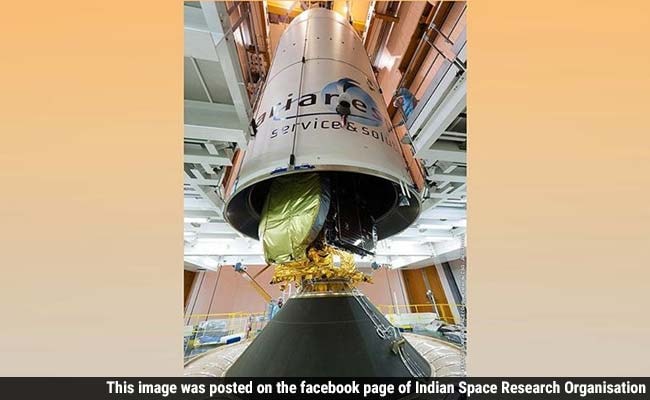
Bengaluru:
After its launch was deferred twice due to bad weather, India's latest communication satellite GSAT-16 was placed in orbit by Ariane 5 rocket in the early hours today from the space port of Kourou in French Guiana.
The European launcher blasted off at 2.10 AM (IST) and hurled the GSAT-16, designed to augment the national space capacity to boost communication services, into space in a flawless flight.
GSAT-16 was launched into a Geosynchronous Transfer Orbit (GTO).
Indian satellite's co-passenger DIRECTV-14, built by SSL (Space Systems/Loral) for operator DIRECTV to provide direct-to-home television broadcasts across the US, was also launched by Ariane 5 VA221, marking 63rd successful mission in a row for the rocket.
"Ariane 5 delivers DIRECTV-14 and GSAT-16 to orbit on Arianespace's latest mission success", Arianespace said on its website.
With a lift-off mass of 3,181 kg, GSAT-16 carries a total of 48 communication transponders, the largest by a communication satellite developed by the ISRO so far.
The DIRECTV-14 spacecraft was deployed first in the flight sequence, separating from Ariane 5 nearly 28 minutes after liftoff, followed four minutes later by its GSAT-16 co-passenger, Arianespace said.
Delivering a total payload lift performance of approximately 10,200 kg, the mission designated Flight VA221 in Arianespace's numbering system lofted DIRECTV-14 for operator DIRECTV, along with GSAT-16.
The capacity crunch has forced ISRO to lease 95 transponders on foreign satellites mainly for private TV broadcasters' use.
The satellite will boost public and private TV and radio services, large-scale Internet and telephone operations.
GSAT-16 will be finally positioned at 55 deg East longitude in the Geostationary orbit and co-located with GSAT-8, IRNSS-1A and IRNSS-1B satellites.
India's rockets PSLV and the present GSLV do not have the capability to launch satellites of more than two tonne class, prompting ISRO to opt for an outside launch.
ISRO is developing the next big launcher, GSLV-MkIII, which can put satellites of up to 4 tonnes in orbit.
The European launcher blasted off at 2.10 AM (IST) and hurled the GSAT-16, designed to augment the national space capacity to boost communication services, into space in a flawless flight.
GSAT-16 was launched into a Geosynchronous Transfer Orbit (GTO).
Indian satellite's co-passenger DIRECTV-14, built by SSL (Space Systems/Loral) for operator DIRECTV to provide direct-to-home television broadcasts across the US, was also launched by Ariane 5 VA221, marking 63rd successful mission in a row for the rocket.
"Ariane 5 delivers DIRECTV-14 and GSAT-16 to orbit on Arianespace's latest mission success", Arianespace said on its website.
With a lift-off mass of 3,181 kg, GSAT-16 carries a total of 48 communication transponders, the largest by a communication satellite developed by the ISRO so far.
The DIRECTV-14 spacecraft was deployed first in the flight sequence, separating from Ariane 5 nearly 28 minutes after liftoff, followed four minutes later by its GSAT-16 co-passenger, Arianespace said.
Delivering a total payload lift performance of approximately 10,200 kg, the mission designated Flight VA221 in Arianespace's numbering system lofted DIRECTV-14 for operator DIRECTV, along with GSAT-16.
The capacity crunch has forced ISRO to lease 95 transponders on foreign satellites mainly for private TV broadcasters' use.
The satellite will boost public and private TV and radio services, large-scale Internet and telephone operations.
GSAT-16 will be finally positioned at 55 deg East longitude in the Geostationary orbit and co-located with GSAT-8, IRNSS-1A and IRNSS-1B satellites.
India's rockets PSLV and the present GSLV do not have the capability to launch satellites of more than two tonne class, prompting ISRO to opt for an outside launch.
ISRO is developing the next big launcher, GSLV-MkIII, which can put satellites of up to 4 tonnes in orbit.
Track Latest News Live on NDTV.com and get news updates from India and around the world

